5 DAYS FOUNDATION AND 5 DAYS ADVANCE SYLLABUS IN VISCERAL OSTEOPATHY
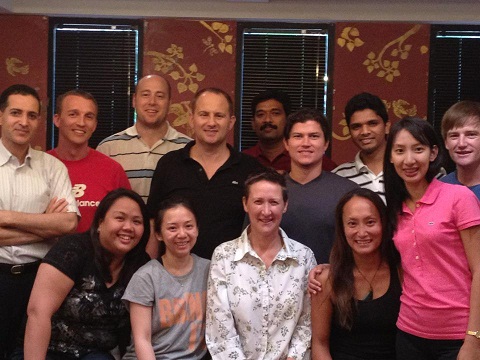
PRESENTOR: LEOMIL P. ADRIANO
PHYSIOTHERAPIST
OSTEOPATH
ACUPUNCTURIST
DIPLOMATE IN OSTEOPATHIC MANIPULATIVE THEORIES AND PRACTICE
MASTER IN PHYSICAL THERAPY (ORTHOPEDICS)
Supported by Dr George Papaphotis DC.DO.ND & Dr Robert Goodrum DO.ND.PT.MSc
Core text
VISCERAL MANIPULATION I AND II by Jean Pierre Barral
Other texts
all by Jean Pierre Barral
TRAUMA: AN OSTEOPATHIC PERSPECTIVE
UROGENITAL MANIPULATION
THORAX
What is VISCERAL MANIPULATION/MOBILIZATION?
Visceral Manipulation, or mobilization, is a light technique use in Osteopathy in order to facilitate and influence the inert movements of the visceral organs. These techniques are not uncommon in alternative therapy but were improved and made more systematic by Jean Pierre Barral.
Course Preparation
To prepare for this intensive course it is best that students review the different landmarks, physiology, and functions of the different visceral organs as well as the different terminologies from the Goodrum modules and trainings.
Course Objectives
This is a practical course aimed for giving the participants knowledge and skills in assessing, managing, treating, and preventing maladies and dysfunction of the visceral organs. The students will be expected to properly evaluate and manage patients that present with visceral organs and correlates.
Day Plan
Each day will be comprised of lectures, demonstrations and workshops. Return demonstration from the students and participants will be expected. At the end of the ten days, participants should properly deliver a visceral mobilization treatment starting from evaluation and proceeding up to management and rehabilitation.
The core topics are as follows:
·Mobility and Motility of the Visceral Organs
·Expir and Inspir
·Listening and Sensing Techniques
·Liver
·Stomach
·Spleen
·Kidney
·Large Intestine
·Small Intestine
FOUNDATION VISCERAL OSTEOPATHY
DAY 1 and DAY 2:
·History of Visceral Mobilization
·Vector of Forces and the Effect on the Visceral Organs
·Visceral and Fascial Network
·Visceral Plane of Movement
·Visceral Manipulation Glossary of Terms
oGlobal and Local Listening and Sensing
oExpir/ Inspir
oMobility and Motility
·Basic Visceral Sensing Techniques
·The Liver-Anatomy and Physiology
·Sensing the Liver
·Mobility of the Liver
·Mobilization of the Liver
DAY 3 and DAY 4:
·Review of Day 1 and 2
·Fascial Network of the Liver
·Motility of the Liver
·The Stomach
·The Spleen
·The Stomach, Spleen and its Fascial Network
·Mobilization of the Stomach and Spleen
·Motility of the Stomach and Spleen
·The Large Intestine and Small Intestine
DAY 5:
·Review of the first 4 days
·Mobilization of the Intestines
·Motility of the Intestines
·Sensing the Kidney
·Mobility and Motility of the Kidneys
ADVANCE VISCERAL OSTEOPATHY
The next five days are geared toward integrating the different visceral organs with the smaller fascial systems. The topics covered here will prepare the participants for integrating the visceral organs within the other concepts such as traditional oriental medicine.
The core topics are as follows:
·Review of the Core Concepts from the Foundation Course
·Pancreas
·Sphincters
·Thorax and Lungs
·Urogenital System
·Heart and Vascular System
MODULE 2: ADVANCE VISCERAL MOBILIZATION
DAY 6 and DAY 7:
·Review of Module 1 with Correlation with Traditional Oriental Medicine
·Sensing the Pancreas
·Mobility of the Pancreas
·Motility of the Pancreas
·Listening and Sensing the Sphincters
DAY 8 and DAY 9:
·Introduction to the Thorax
·Lung and its Network
·Mobilization of Specific Lobes of the Lungs
·Fascial Manipulation of Thoracic Region
DAY 10:
·Review of the last 4 days
·Mobilization of the Urogenital Region
·The Heart and Vascular Mobilization
Listening technique on the liver’s mobility in preparation for manipulation
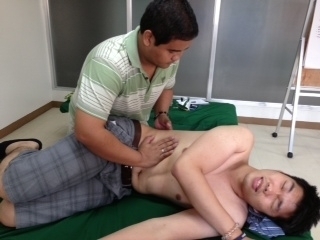
Manipulation of the liver in order to improve its mobility
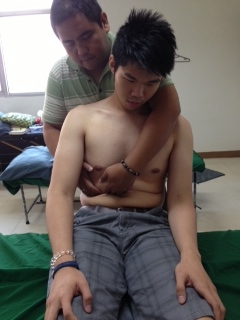
Manipulation of the liver in supine to enhance its mobility
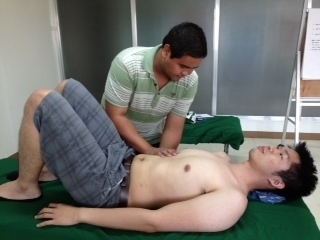
Manipulation of the pancreas, especially if the pancreas is hypomobile
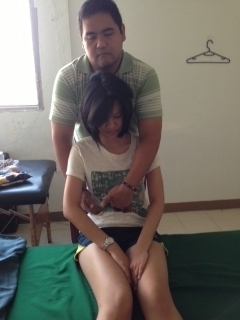
Manipulation of the gall bladder especially if the ducts are not functioning optimally
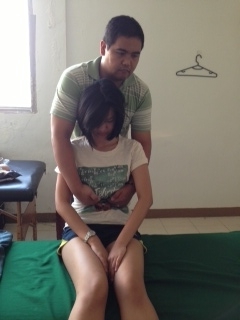
Manipulation of the lesser omentum which could be tight and cause pain in the upper abdominal region
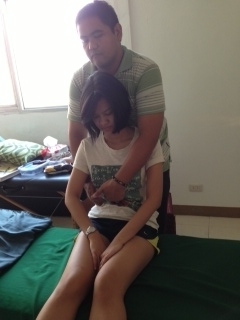
Listening technique on one of the valves to improve valvular opening and closing
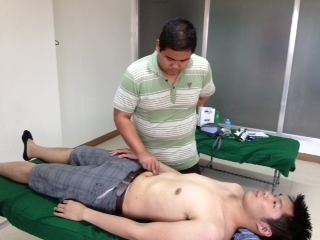
Listening and manipulation of the small intestine in order to improve digestive function
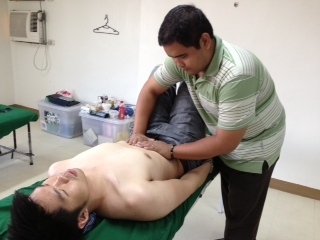
Manipulation of the large intestine to relieve colic pain
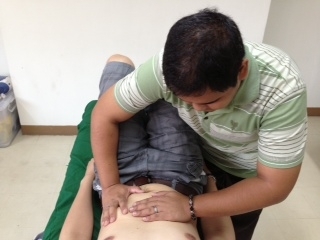
Manipulation of the large intestine’s ligament to improve its mechanical function
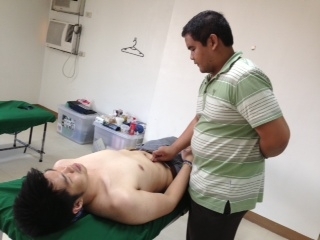
Listening and manipulation of the small intestine in order to improve digestive function
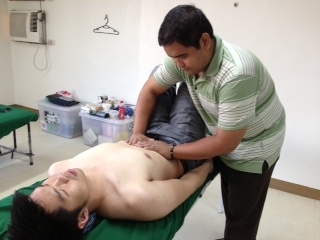
Listening technique for the kidney’s mobility in preparation for manipulation
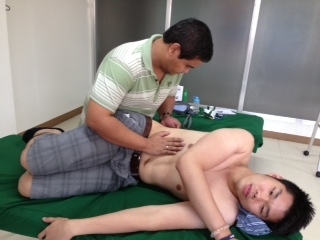
Visceral Osteopathy
Introduction
McConnell DO studied the anatomy & mechanics of the visceral and stressed the importance of a mobile chest wall and an efficient diaphragm for good visceral function, as well as for vascular and lymphatic drainage. He also pointed to the fascial links with the neck and abdomen through the cervical fascia, sibson’s fascia, pericardium, and the diaphragm. Further, he stressed good posture as a means to maintain the normal relationship of thoracic and abdominal visceral.
Until recently osteopathy was largely understood to be a therapy for musculoskeletal disorders. It was not generally appreciated that osteopathy could also be used to treat a range of other conditions which are related to the function of the internal organs and viscera. Rising concern about the safety of pharmaceutical drugs has brought visceral osteopathy back into focus, and it is becoming a popular therapeutic approach once again.
One hundred and forty-fifty years ago, when osteopathy was first practised in the USA, there were few effective drugs. Herbal medicine was not widely used by the settlers of the time. Hundreds of years before osteopaths, manipulation and visceral manipulation were highly sophisticated systems in the hands of the Native American Indians.
In the past 100-plus years, osteopathic treatment was used to treat many health problems, digestive issues, infections, and fevers. The success rate was good; the hearty rural citizens had good immune systems and the osteopath would stimulate their defences which led to healing healthy outcomes.
With the advent of pharmaceutically-based medicine, the emphasis transitioned from visceral osteopathy toward the use of a more chemically-based approach encouraged by television and other propaganda sources.
Recently in these last few years, it has been realised that the function of these internal organs is greatly affected by their relative position and mobility.
The treatment is some form of soft external massage, often involving the abdomen. This seeks to normalise the natural mobility of the organs, which in turn can help to improve function, circulation, and lymphatic drainage.
Contraindications
This treatment is not suitable when the area is very inflamed or painful, or there is a history of cancer, or lastly if the diagnosis is unclear.
Visceral manipulation; Visceral Osteopathy; Manipulation of the Thorax & Abdominal Organs
Dr. Barral DO speaks of the visceral manipulation as a missing link in manipulative therapy or Osteopathy. As osteopaths and other manual therapists, for many years we have dealt with the musculoskeletal system, bones, muscles and joints, and the nervous system. Until recently the abdominal organs have not had the same importance in Osteopathy. We are aware of the fact that inner organs do link between musculoskeletal and nervous systems. Visceral somatic reflexes are a medical fact.
The three systems —visceral organs, nervous and musculoskeletal— act as one but yet influence each other. Osteopaths have found as a result of visceral manipulation the blood perfusion of the brainstem raises for a short time by up to 30-40 % on MRI scans. Another example would be using visceral osteopathic manipulation to indirectly treat muscular skeletal symptoms, such as a finding from an osteopathic examination of reduced range of motion in the shoulder joint. These visceral restrictions or somatic dysfunctions may be the maintaining factor to complete the overall clinical picture.
Visceral Osteopathy should be understood as specific anatomical connections of ligaments between our inner organs and the musculoskeletal system.
What is the role of Visceral Osteopathy with certain disease processes & symptoms?
Osteopathic visceral techniques help connective tissues between our inner organs, ligaments, and fascia interact better with our muscular skeletal system. Many patients have abdomen operations which can affect the shoulder joint. The Physio’s approach is to assess and treat the shoulder joint.
On palpation, osteopathic examination demonstrated serious somatic dysfunction and restriction of movement of many organs in the abdomen. Scars, ligaments, and organs were treated with Visceral Osteopathy.
The symptoms in the shoulder were resolved due to the unwinding of lesion-chaining restrictions and local tensions.
Vision of Dr Jean-Pierre Barral DO
The techniques of visceral osteopathy have existed for a very long time. Dr Andrew Taylor Still DO, the founder of osteopathy, had used the visceral approach in a minor way. Dr Barral was the first who used his osteopathic knowledge to include clinical visceral osteopathic manipulation and prove the effect of diseases and restrictions on the spine. Dr Barral also separated mobility and motility of inner organs.
Mobility is controlled by diaphragm breathing as every inner organ moves along a defined physiological axis. Motility is an intrinsic energetic movement, with the organ direction and dynamics coming from embryological development.
Dr Barrel DO has collected information for twenty-plus years and has developed the psychosomatics of inner organs.
Indications of Visceral Treatment
The osteopath’s use of visceral treatment is mostly between articular techniques related to the muscular skeletal system and cranial osteopathy/craniosacral therapy. Indications and symptoms which may first make use of the visceral technique are gastrointestinal disturbance, flatulence, IBS/bellyache, abdominal scars, colics, chronic inflammatory processes, ptoses, bladder pain, and menstruation issues.
In the case of non-specific vague backache, it is advisable to carry-out a medical visceral examination. Weakness, tiredness, and depression, as well as certain kinds of headaches, can have their roots in the visceral area. In other cases, the liver can play a very important role in neck and right shoulder blade pain via the capsule of the liver being supplied by the phrenic nerve C3, 4 and 5 thereby setting-up a visceral somatic reflex.
The internal organs are covered with a skin/pleura and peritoneum, as is the nervous system. The bones and muscles, indeed the complete human body, has a skin or covering.
This is a complex communication system via ligaments and fascia which operates within our bodies automatically and independently of our consciousness.
The liver in most Western populations is very weak, as is the pancreas, and it is weakened further by poor nutrition and suppressed negative emotions. This eventually may quickly yield tiredness or heaviness, with the result being we have no energy and experience no joy in life, perhaps with even a slide into a depression.
At that point, the liver will no longer be able to detoxify well. The toxins build up, eventually in the large intestine. Many chronic diseases, for example arthritis, can be treated well by means of an holistic approach; and if the patient cooperates, the prognosis will be good. Many medical doctors have already begun now treating holistically lower back/SI J joint pain that cannot be explained from an osteopathic or orthopaedic view. An osteopathic visceral examination allows us sometimes to find the scars after an appendicitis operation or possibly somatic dysfunction of the organs of the urogenital area.
Osteopathic visceral treatment is a gentle method. Visceral Osteopaths always try to work in a painless approach. We work within the body and offer it possibilities of correcting itself.
Children react quickly to visceral techniques and should benefit from a visceral osteopathic treatment. This is why we should also use minimum palpating pressure. It is sufficient to work just with the motility of the organ. Clinical experience demonstrates that in cases of difficult childbirth, the osteopathic visceral techniques are great. Mostly Osteopaths choose to do craniosacral diagnosis and treatment along with visceral techniques.
In conclusion, visceral osteopathy is a direct way to view and treat the whole body. It links well with cranial osteopathy/cranial sacral therapy and also blends well with general osteopathic techniques, GOT, for example HVT/grade 5 manipulation.
Our school teaches specific articular manipulation when needed in combination with osteopathic soft tissue, cranial sacral, visceral, applied kinesiology techniques and physio rehab.
We advise you to study Visceral Manipulation after our foundation Advanced & Extremity Manipulation Courses.
Fee $1500USD per 5 day course or $2,800USD for both ten days.
Fee includes accommodation & breakfast in Asia.
